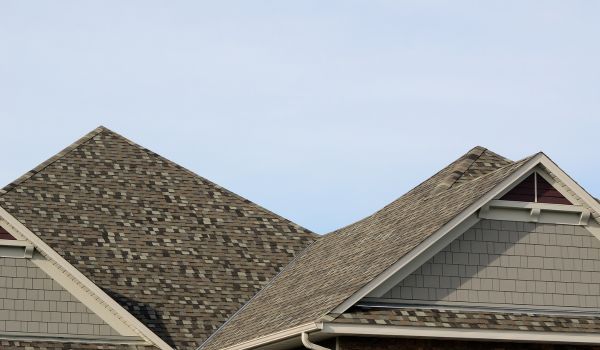

When it comes to roofing styles, the hip roof is one of the most popular choices, especially in places like Boise, Idaho. Known for its durability, sleek design, and resistance to strong winds and snow, a hip roof is a smart option for homeowners looking to improve their property?s curb appeal and structural integrity. But what exactly is a hip roof, and why is it such a great choice for Boise homes?
In this article, we'll dive deep into hip roof design, hip roof framing, and even how to handle joining a new addition hip roof to an existing roof with shingles. If you're considering a hip roof for your home, or just curious about this roofing style, keep reading!
What Is a Hip Roof?
A hip roof is a type of roof where all four sides slope downward toward the walls, creating a gentle, uniform look. Unlike a gable roof (which has two sloping sides and two vertical ends), a hip roof has no vertical ends, making it more stable and weather-resistant.
Key Characteristics of a Hip Roof
- Four sloping sides ? All sides angle downward to form a pyramid or trapezoidal shape.
- No vertical gables ? This makes the roof sturdier and less prone to wind damage.
- Efficient drainage ? The sloped design prevents water buildup, reducing the risk of leaks.
- Great for high-wind areas ? Hip roofs perform well in places with extreme weather, like Boise?s winter snow and occasional heavy winds.
Why Are Hip Roofs Popular in Boise?
Boise experiences a mix of weather conditions, from snowy winters to hot summers. The hip roof design is ideal for handling these elements, making it a favorite among homeowners in the area.
Benefits of a Hip Roof in Boise
? Wind Resistance: Because all sides slope down, wind has less surface area to push against, reducing the risk of damage.
? Snow Load Management: In winter, Boise gets a decent amount of snow. A hip roof helps the snow slide off, preventing excessive weight buildup.
? Better Drainage: Since there are no flat areas, rainwater and snowmelt run off easily, preventing leaks and water damage.
? Modern Aesthetic: Hip roofs have a clean, balanced look that enhances the appearance of a home.
Hip Roof Design: Different Styles to Consider
There?s more than one way to build a hip roof. Depending on your home?s architecture and aesthetic preferences, you might choose from a few different hip roof designs.
1. Simple Hip Roof
This is the most common type, with four sloping sides that meet at a ridge in the center. It?s straightforward and practical, offering great protection against wind and water.
2. Pyramid Hip Roof
As the name suggests, this style forms a pyramid, with all sides meeting at a single peak. It?s ideal for smaller structures, such as gazebos and garages.
3. Mansard Hip Roof
This design includes a double slope on each side, providing extra attic space and a unique aesthetic.
4. Cross-Hip Roof
Perfect for homes with L-shaped structures, a cross-hip roof involves two intersecting hip roof sections, adding dimension and functionality.
Each of these designs offers distinct advantages, so choosing the right one depends on your home's structure and your personal style preferences.
Hip Roof Framing: The Basics
If you?re thinking about building a hip roof, understanding its framing is crucial. The framing determines how strong and stable the roof will be.
Components of Hip Roof Framing
? Hip Rafters: These run from the ridge to the corners of the roof, forming the framework.
? Common Rafters: These extend from the ridge to the eaves, providing the main support.
? Jack Rafters: Shorter rafters that fit between the hip rafters and the ridge, filling in gaps.
? Ridge Board: The horizontal beam at the top where all rafters meet.
Since hip roof framing requires precise cutting and measurements, it?s usually best left to professionals. However, if you?re into DIY projects, see here an essential roof inspection checklist for homeowners, you?ll need careful planning, the right tools, and a solid understanding of angles and structural integrity.
Joining a New Addition Hip Roof to an Existing Roof with Shingles
Adding a new section to a home often means joining a new addition hip roof to an existing roof with shingles. This process can be tricky, but with proper planning, you can ensure a seamless integration.
Steps to Connect a New Hip Roof to an Existing Roof
- Assess the Existing Roof: Make sure the current roof can handle the new addition structurally.
- Align the Rooflines: The new hip roof should match the slope and angles of the existing roof.
- Install Valley Rafters: These will help transition between the new and old sections.
- Lay the New Shingles: Overlapping the old shingles correctly will create a watertight seal.
- Seal and Flash Properly: Proper flashing prevents leaks where the two sections meet.
This process ensures that the new addition looks like a natural part of your home rather than an afterthought.
Pros and Cons of a Hip Roof
Like any roofing style, hip roofs have advantages and disadvantages.
? Pros:
? Durability: Great for extreme weather conditions.
? Aesthetics: Clean, symmetrical look.
? Better Insulation: Naturally provides better attic ventilation.
? Cons:
? Cost: More materials and labor-intensive framing make it pricier than gable roofs.
? Complex Construction: More difficult to build compared to simpler roofing styles.
Despite the higher cost, many homeowners find that the benefits outweigh the downsides, especially in a city like Boise, where weather resistance is a must.
Read More: Innovative Roofing Trends: What?s New in the Industry
Final Thoughts: Is a Hip Roof Right for Your Boise Home?
If you?re considering a hip roof for your home in Boise, it?s a fantastic choice due to its wind resistance, snow management, and sleek design. While it may cost more upfront, the long-term durability and aesthetic appeal make it a worthwhile investment.
Whether you're planning new construction, remodeling, or joining a new addition hip roof to an existing roof with shingles, understanding the design, framing, and installation process can help you make the best decision.
If you're unsure about the best roofing style for your home, consulting a local roofing expert in Boise can give you tailored advice based on your specific needs.
FAQs about Hip Roof
1. How much does it cost to install a hip roof in Boise?
The cost depends on the size, materials, and labor, but expect to pay anywhere from $8,000 to $25,000 for an average-sized home.
2. How long does a hip roof last?
With proper maintenance, a hip roof can last 40?50 years, especially if high-quality shingles or metal roofing are used.
3. Can you add skylights to a hip roof?
Yes! However, since all sides are sloped, placement is crucial to prevent water leaks and maximize natural light.
4. What is the best material for a hip roof?
Asphalt shingles, metal, and tile are all great options, depending on your budget and aesthetic preferences.
5. Can I build a hip roof myself?
While it's possible, hip roof framing is complex and best handled by professionals to ensure proper structural support and durability.